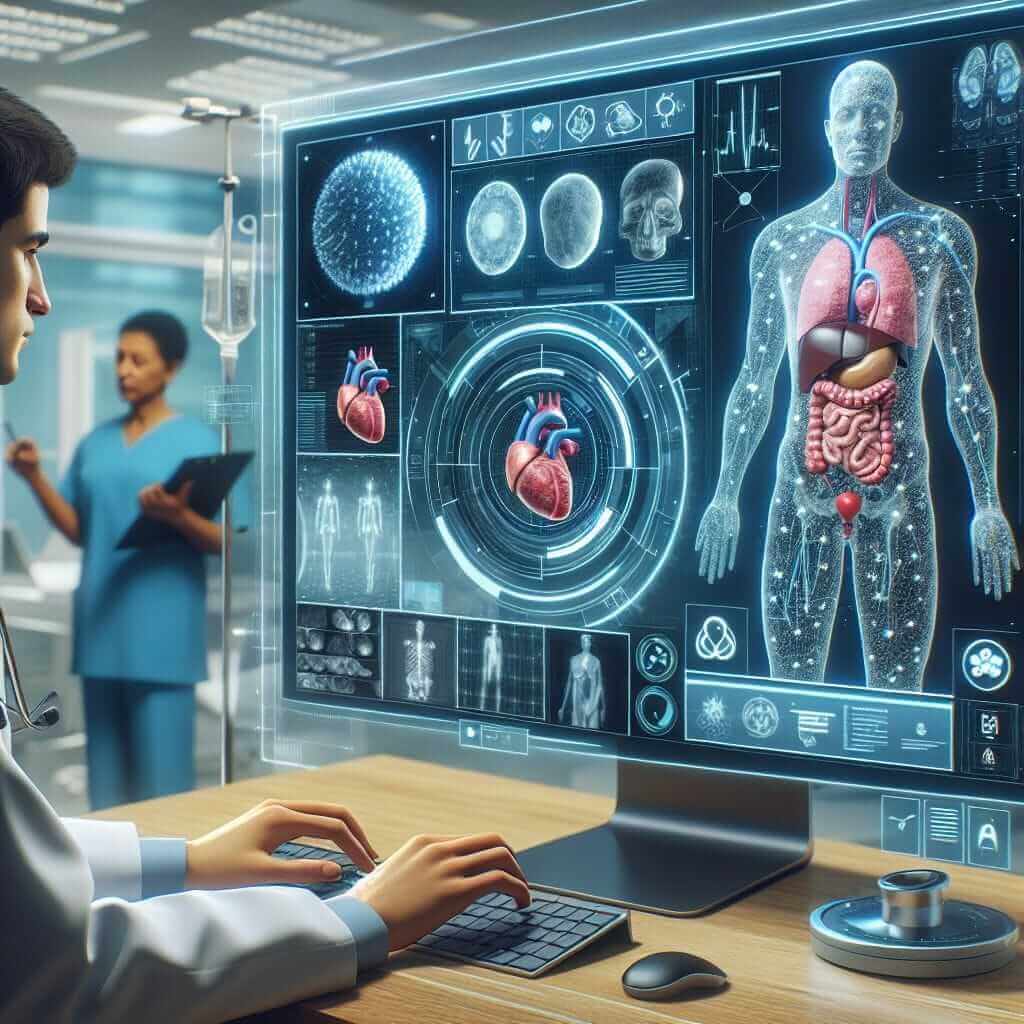The Reading section of the IELTS exam requires candidates to answer 40 questions within 60 minutes, based on passages taken from books, magazines, journals, and newspapers. Familiarity with contemporary topics such as Artificial Intelligence in Healthcare Diagnostics can significantly enhance your preparation. This subject has gained immense popularity due to its relevance in today’s digital age, and you might encounter it in future IELTS exams.
Nội dung bài viết
In this article, we will provide a full IELTS Reading practice test on the topic of Artificial Intelligence (AI) in healthcare diagnostics, along with various types of questions and detailed answer keys. This test will simulate a real IELTS Reading section and will be beneficial for your exam preparation.
Reading Passage
Title: The Role of Artificial Intelligence in Healthcare Diagnostics
Passage
Artificial Intelligence (AI) has revolutionized various sectors, and healthcare is no exception. AI in healthcare diagnostics has shown remarkable progress, offering promising solutions to enhance accuracy, speed, and reliability in diagnosing diseases.
One of the most significant applications of AI in healthcare diagnostics is medical imaging. AI algorithms, particularly those based on deep learning, have been trained on vast datasets of medical images, such as X-rays, MRIs, and CT scans, to identify anomalies. These algorithms exhibit impressive accuracy, sometimes surpassing human experts in detecting conditions like cancers and fractures.
Furthermore, AI-powered systems play a critical role in personalized medicine. By analyzing genetic, clinical, and demographic data, AI can predict disease predisposition and suggest tailored treatment plans. This precision in diagnostics and treatment ensures better patient outcomes, reducing the time and cost associated with traditional trial-and-error methods.
AI’s capability in natural language processing (NLP) has also facilitated better diagnostics through the analysis of unstructured medical data. Electronic health records (EHRs), which contain valuable patient information, can be effectively mined by AI to identify patterns and correlations that might be missed by human analysis. This assists in early disease detection and management.
Despite these advancements, the integration of AI in healthcare diagnostics raises ethical and legal concerns. Patient data privacy and the need for transparency in AI decision-making processes are critical issues that need addressing. The reliance on AI systems also necessitates regular updates and validation to maintain accuracy and trust.
Nevertheless, the potential of AI to transform healthcare diagnostics is undeniable. Continued research and collaboration between technologists, healthcare professionals, and policymakers are essential to fully realize AI’s benefits while mitigating its challenges.

Questions
Multiple Choice
- What is one of the prominent applications of AI in healthcare diagnostics mentioned in the passage?
- A. AI in financial data analysis
- B. AI in manufacturing
- C. AI in medical imaging
- D. AI in social media monitoring
True/False/Not Given
- AI algorithms cannot surpass human experts in detecting medical conditions.
- AI’s natural language processing aids in analyzing electronic health records.
- There are no ethical concerns regarding the use of AI in healthcare diagnostics.
Matching Information
Match the following information (A-D) to the statements (5-7).
A. Medical imaging
B. Personalized medicine
C. Natural language processing
D. Ethical and legal concerns
- Helps predict disease predisposition
- Raises patient data privacy issues
- Uses deep learning to identify anomalies
Short-answer Questions
- What kind of data does AI analyze to suggest tailored treatment plans?
- What assists in early disease detection and management according to the passage?
Answer Keys and Explanations
Answers with Explanations
-
C. AI in medical imaging
- Explanation: The passage clearly states that one of the significant applications of AI in healthcare diagnostics is medical imaging.
-
False
- Explanation: The passage mentions that AI algorithms exhibit impressive accuracy and sometimes surpass human experts in detecting conditions.
-
True
- Explanation: The passage discusses that AI’s capability in natural language processing (NLP) facilitates better diagnostics through analysis of unstructured medical data such as EHRs.
-
False
- Explanation: The passage explicitly mentions ethical and legal concerns regarding patient data privacy and the need for transparency in AI decision-making processes.
-
B. Personalized medicine
- Explanation: The passage references AI in personalized medicine for predicting disease predisposition and suggesting tailored treatment plans.
-
D. Ethical and legal concerns
- Explanation: The passage highlights the issues of patient data privacy and the need for transparency, which are ethical and legal concerns.
-
A. Medical imaging
- Explanation: The passage states that AI algorithms based on deep learning are used in medical imaging to identify anomalies.
-
Genetic, clinical, and demographic data
- Explanation: The passage mentions that AI analyzes these types of data to suggest tailored treatment plans.
-
Electronic health records (EHRs)
- Explanation: The passage indicates that AI’s natural language processing helps in analyzing EHRs for early disease detection and management.
Common Mistakes to Avoid
- Misinterpretation of Keywords: Ensure you understand keywords and phrases correctly within the context they are used.
- Overlooking Details: Pay attention to specific details in the passage that can answer the questions directly.
- Assumptions: Do not assume information that is not provided or indicated in the passage.
Vocabulary
- Algorithm /ˈælɡərɪðəm/ (n.): A process or set of rules to be followed in calculations or other problem-solving operations, especially by a computer.
- Anomaly /əˈnɒməli/ (n.): Something that deviates from what is standard, normal, or expected.
- Ethical /ˈɛθɪkəl/ (adj.): Relating to moral principles or the branch of knowledge dealing with these.
- Privacy /ˈpraɪvəsi/ (n.): The state of being free from public attention or unsolicited engagement.
Grammar Focus
- Present Perfect Tense: Used to indicate actions that have occurred at some point in the past but are relevant now. For example, “AI has revolutionized various sectors…”
- Passive Voice: Used to emphasize the action rather than the subject performing the action. For example, “AI algorithms have been trained on vast datasets…”